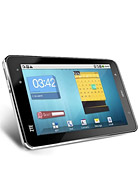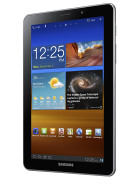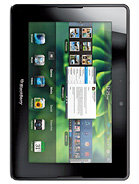Samsung Galaxy Tab 7.0 Plus review: A game of sequels
A game of sequels
Final words
Seven-inch tablets may’ve been dead on arrival after all. We can think of at least a couple that match the description down to the body bag. In hindsight, we should’ve known better about the original Samsung Galaxy Tab. What we thought was the iPad honking its horn as it sped ahead, was actually a flatline beep.
But well, that was then. A couple of software versions and scores of Droid slates later, it’s a different story altogether. And we may as well be looking at the best 7” tablet on the market.
The Galaxy Tab 7.0 Plus upgrades the original seven-inch Samsung slate, which obviously doesn’t cope well with ageing. And although it doesn’t sound as a particularly thorough upgrade, it couldn’t have made a bigger difference. Honeycomb is a welcome replacement of Froyo and the dual core processor is a warning shot to the competition. It’s worth noting too that the new release is slimmer and lighter than the original. After all, people shopping for a seven-inch tablet obviously care about portability.
On the minus side, the 7.0 plus keeps the screen resolution and the battery backup of the original. The Galaxy Tab 7.7 for example manages to squeeze a 5100 mAh battery in a much slimmer body. But well, that S-AMOLED screens do take less space on top of being superior in almost every other way. As to the screen resolution, WSVGA (1024 x 600) seems to be the norm in the class and it’s fine for a 7-incher.
Among the more prominent seven-inchers, the BlackBerry PlayBook has the same screen resolution as the Galaxy Tab 7.0 Plus. A number of price cuts don’t seem to have done much good to a gadget that came to the market rather late and is yet still rough around the edges.
The HTC Flyer is another potential competitor. The single-core tablet is running Gingerbread and though we wouldn’t call it underpowered, it cannot quite match the capabilities of the Exynos chipset found in the 7.0 Plus. The Flyer tries to make up for that with the Scribe technology and the Sense customizations that run deeper than Honeycomb would allow.
None of these two has support for phone calls and the BlackBerry Playbook even omits the memory card slot. The Galaxy Tab 7.0 Plus has a definite edge in terms of processing power and multimedia capabilities thanks to Samsung’s own Exynos chipset.
Overall, the experience Samsung offer is hard to beat. The rich software package, the impressive video codec support, the ability to make phone calls and the expandable memory are sure to be much appreciated. These features are by no means exclusive to Samsung. Phone calls are enabled on the ZTE V9+. The HTC Flyer and the Acer Iconia Tab A101 have microSD card slots.

![]()
ZTE V9+ • Acer Iconia Tab A101
The entire package is almost impossible to repeat though. Unless of course, you don’t mind paying extra. The Samsung Galaxy Tab 7.7 will gladly match the offer and top it with Super AMOLED and a slim metallic body. But that will cost you at least 100 euros more.
So, to wrap it all up, Samsung are leaving almost no blanks in their lineup. Their Galaxy Nexus and the Note fill a space where there should be nothing really. And they make themselves at home too. Then come the tablets – and they do come in all sizes. The Galaxy Tab 7.0 Plus is the entry level option. Alive and kicking.
Reader comments
- Anonymous
- 26 Apr 2021
- fmP
guide on how to update software.
- Starbwoy
- 01 Jul 2018
- 0wq
well the tablet is good but I need to know how to upgrade to lollipop or jelly bean
- arumugam
- 09 Mar 2016
- vIe
how to download the videos in 7.0 plus tab. what software is to be used.


